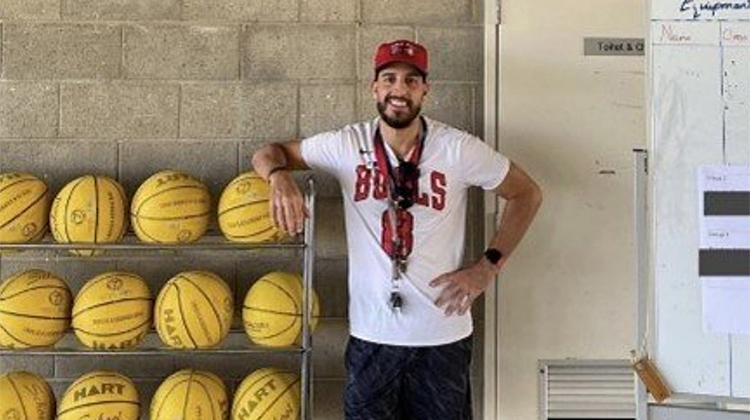A Blueprint for Classroom Management: Authentic Classroom Techniques You Can Implement Immediately

Having taught predominantly years 3-6 in a classroom setting and hosting multiple pre-service teachers, Ash has also accumulated extensive experience as a PE teacher across diverse educational contexts and has adeptly handled substitute teaching duties as needed. Ash has amassed an impressive following of over 150,000 followers on his educational Instagram and TikTok accounts, where he offers general guidance and tailored advice on classroom management to fellow educators. This approach supports teachers in creating a classroom environment that is structured, yet equitable, where behaviour is managed according to contemporary practice.
Each year, students experience a personal touch from their new teacher, Mr Curmi, or to the students initially pronounced as “Mr Curly”, “Mr Curmen” or somehow “Mr Kermit the Frog”. They learn that I was an avid skateboarder as a teenager. They discover that I love sports, in particular basketball hence the hoop in my classrooms over the years. They raise an eyebrow knowing that I grew up on a Nintendo 64 and that they should not challenge me at Mario Kart. They see that I am dedicated to ongoing growth drawing lessons from everyday encounters and embracing mistakes as opportunities for development. This culture allows for a personalised classroom incentive program to be implemented, concentrating on the encouragement of constructive behaviour and the appropriate recognition of students. Expectations are then established and upheld, setting a standard high. An engaging approach that resonates with students lays the groundwork that enables me to manage behaviour effectively and consistently.
Suitable incentives, engaging lessons, positive relationships, consistent rules and expectations and constructive conflict resolutions, are as fundamental to the educational framework as roots are to a tree’s stability. Without these elements, engagement and interest may wane, leading to increased disrespect and disruption. Echoing the sentiments of Dr Rita Pearson, a once seasoned educator, counsellor and assistant principal, “students don’t learn from teachers they don’t like,” underscoring the importance of positive teacher-student rapport.
Although establishing elaborate incentive programs are commonly regarded as successful tactics for deterring unruly behaviour, they may occasionally provide educators with a false sense of security over classroom discipline. Teachers may feel at a loss when faced with recurring behaviours, turning to strategies like vibrant stickers or a time-out seat to briefly sideline the disruptive conduct. However, these measures are often temporary and do not address the underlying issues, to achieve long-term change.
Intangibles in teaching are those elements that, while not directly measurable, significantly impact the learning experience and outcomes. Effective leadership, for instance, is marked by superior communication abilities. A basketball player is not credited by statistics on their ability to defend the ball carrier or dive for a loose ball heading out of bounds. Likewise, an exceptional student demonstrates resilience, embracing the fact that errors are an intrinsic part of the education journey.
Effective classroom management requires these intangibles and not only those portrayed “quick fix” remedies that appear solely on the surface level. Clear communication, proactive guidance, purposeful differentiation, lesson dynamic and structure, reflective practice and class consistency are just a few strategies teachers can employ to transform the classroom environment from adversity to advantage. These intangibles are crucial for effective teaching and learning, as they contribute to a well-rounded educational experience that prepares students not just academically, but also socially and emotionally for challenges ahead.
Reflecting on the early stages of my career, it’s clear that the absence of certain intangible elements made behaviour management a significant challenge. Should I return to using my behaviour chart? Do I employ strategic praise for attentive students as a model for others, with the hope that it will take effect immediately? Is it effective to record infractions such as ticks or strikes publicly and observe the outcome? Should I raise my voice to command attention? Might a physical activity break be necessary if students appear unprepared to learn? Should I adopt a complacent mentality and come to terms with the possibility that my class is naturally talkative or a “chatty class”?
Over a decade later, I think of the alternative. Have I designed my lessons with enough consideration to accommodate each student’s learning style, thereby minimising the likelihood or disruptive behaviours? Do my teaching methods align with the needs of students? Do I sequence my lessons to ensure that students have opportunities to engage and speak at suitable times? Have I maintained clear communication and provided timely feedback before, during and after the lesson? Are students conscious of my steadfast follow through, including communication with parents and admin? Upon reflection, could I have made small adjustments to my day that might have pre-empted the undesirable behaviour?
These reflections and inquiries are the driving force behind my management of student behaviour in diverse educational contexts. This workshop provides actionable strategies and shares my personal triumphs over the obstacles I’ve previously faced. It is designed to resonate with educators at any point in their journey, from the newly initiated to the experienced, providing insights that are both reflective and forward thinking. Join me as we navigate “A blueprint for classroom management” with methods that are as innovative as they are effective.
‘A blueprint for classroom management - authentic techniques you can implement immediately’ is a workshop that will be led by Ash Curmi, an experienced teacher and mentor with 11 years in the field, at the National Education Summit Brisbane 2025.